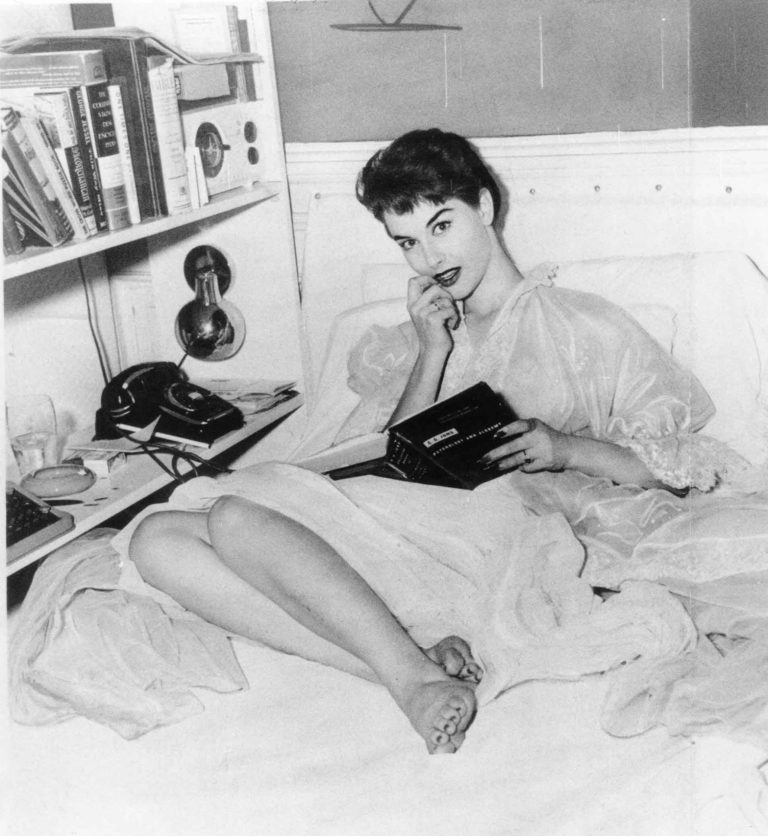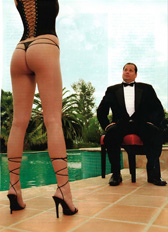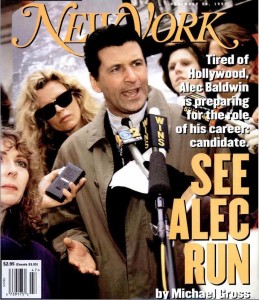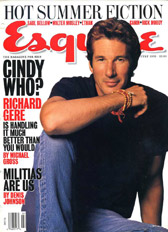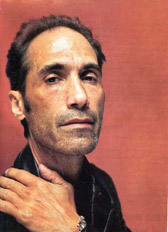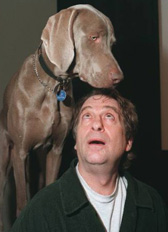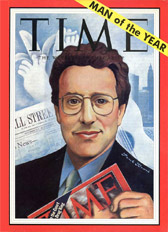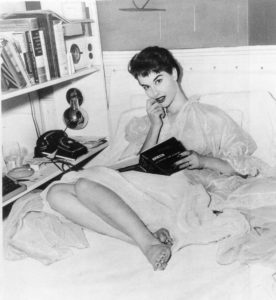 The former model, TV host, actress and makeup artist Nancy Berg died last week at 90. I interviewed Berg for Model: The Ugly Business of Beautiful Women. Here is an excerpt from the book about her:
The former model, TV host, actress and makeup artist Nancy Berg died last week at 90. I interviewed Berg for Model: The Ugly Business of Beautiful Women. Here is an excerpt from the book about her:
Something about modeling seemed to attract women who attracted trouble. “So many tragic lives” is all Richard Avedon will say about the models of his formative years in fashion. On the pages of magazines, models presented images of perfection. But the real girl behind the controlled image on the page was often a total mess. Nancy Berg was, and proud of it, too. “I want to live my life grandly,” she pronounced to the New York Journal-American in 1955. “Grandly?” She laughs, rereading that clipping today in a network television studio where she works as a makeup artist. “I did it druggedly and drunkenly. I did anything I could get.”
Berg was born in Kenosha, Wisconsin, in 1931. At age three she posed for her first photograph. “It was the first time I got any attention or affection from my mother, and that made me think, ‘This is what I have to do with the rest of my life,’” she said. Her long-separated parents divorced when she was eleven. “My mother beat the shit out of me every day with belts, shoes, boiling coffee,” she says. “I said, ‘This isn’t going to happen anymore,’ and I left.” At fifteen she tossed a suitcase out her bedroom window and ran away from home.
“People had said I was pretty,” Berg relates. “I looked in the mirror and thought, ‘There’s something there.’ I didn’t have many alternatives. You got married, typed, or you were a hooker. I had one asset, my face. I figured if I got on the cover of Vogue , I’d be OK. If I was a sweet, pretty thing, I’d be all right in my mother’s eyes.”
With $50 in her pocket, she headed for Florida, rented a room from a family in Fort Lauderdale, and got work as a trick water skier and as a model at Burdine’s. From there she bounced to Chicago, where she met her first boyfriend, the broadcaster Dave Garroway, who later was the host of NBC’s Today show. When he moved to New York early in 1951, she followed and checked into the Plaza Hotel.
Berg had tremendous energy. Unfortunately it came from an elixir Garroway introduced her to—“a red liquid called the Doctor,” Berg recalls. “It was pure speed. One sip, and I could conquer the world. With a little Doctor or a vodka, I had the courage to make it. I was just a scared little five-year-old with a birth certificate that said I was twenty-five.” Berg appeared on her first Vogue cover six months after hitting New York. “It was such an easy living,” she says. “But after the first few years, the first few covers, and no response from my mother, I got really bored. It’s not intellectually stimulating or spiritually nourishing work. You’re an object, a thing.”
She was earning $40,000 a year, but she didn’t hold on to it. “Brilliant advisers” in the investment business ended up with a lot of her earnings. She went out every night, tossing back vodka tonics, sometimes smoking cigars and dancing barefoot in nightclubs. “I’d go to the theater with a critic like Richard Watts or Harold Clurman, he’d go write his review, and I’d meet Leonard Lyons at Sardi’s, go to E1 Morocco, meet a date, dance till dawn, go home, take a bath, some more speed, and go to work,” she says. “I didn’t sleep for ten years.” Ironically, in 1955, she starred in a television show, Count Sheep , that aired at one each weeknight. Designed to help insomniacs, it followed Berg through a bedtime routine that found her cuddling a little dog, changing into a nightie, and then signing off, yawning and counting.
Her suitors were legion, but never special to her, she says. “Do you think anybody went out with me for my mind? Everybody wanted a trophy, the girl of the moment. I was invited to parties by people I barely knew. I went out with Sinatra, Jack Kennedy, Aly Khan, Yul Brynner, George Peppard, Orson Welles, James Michener, William Saroyan, Clifford Odets, both Cassinis. I almost married Efrem Zimbalist. Then there were those social freaks, Claude Cartier, Reinaldo Herrera, Peter Salm. I didn’t get fucked because I kept moving. I was very angry. I was in analysis all the time. Thank God for acting. It was an acceptable way to vent.”
Her strangest suitor was undoubtedly Roy Cohn, the bulldog attorney and closeted homosexual who made his name as counsel to Senator Joseph McCarthy and the Senate’s permanent subcommittee on investigations during the Red Hunt of the early fifties. She would have Cohn meet her at the Russian Tea Room, and she would show up in a red dress. Once, in a jazz club, Cohn asked for a telephone and called someone to order that the singer they were listening to be investigated. Berg picked up her dessert—cherries jubilee, of course—and dumped it on Cohn’s head.
Berg finally married at twenty-six and was divorced three years later, just after she had a baby. She married again, to a diet doctor “who had these wonderful pills,” she says. “I was never so thin.” But two weeks after their wedding Berg says he beat her and her young daughter, and she left him. All along she kept working. While the models Berg knew and lunched with saved their money and had families, she kept playing and paying. “I blew my money on externals,” she says. “A high profile is very costly to maintain. I thought you had to do all that. That’s how you survived.”
Finally she even lost the face that had served her so well. She’d married again in the mid-sixties, to a man with four children of his own. One day one of his sons got high and violent on LSD. “He meant to hit his father, but he slugged me,” Berg says. She lost four molars, chipped fourteen more teeth, and had extensive plastic surgery. “All I was was a face,” she says. “All of a sudden I had no assets. I really started to drink then.” Her analyst treated her with more drugs, “a rainbow of downers, Thorazine, Stelazine, and lithium at the same time,” Berg says. Finally she hit bottom and joined Alcoholics Anonymous. Another divorce followed. “My husband didn’t like me sober,” she says.
Berg was hardly alone in her substance abuse. Drinking and pill taking were epidemic in the modeling modeling world. This was the fast lane after all. “A lot of Ford girls went to a Park Avenue doctor who gave us appetite suppressants—nice name, huh?” Berg says. Drinking was the drug of choice, though. “They were terrible, terrible drunks,” Berg says. “It’s a very scary world when all you are is a face.”
Copyright © Idee Fixe Ltd. 1995, 2011
Photo credit: Calvacca/New York Post

